
SPANGLES first appeared in New Zealand during the late 1970s and then soon after that in Australia. Before long they were brought to Europe by Rolf Christen and they went to Reinhard Molkentin in Germany.
The history of the early days of spangles seems to be viewed through rose-tinted glasses by various people who wish to make claims. The fact is that it was in Reinhard’s birdroom that they were paired with his best birds – and it was he who made massive steps forward with the variety.
With spangles, the vital fact to remember is that they were paired with his best birds and it’s the pedigree of those top-quality birds that sit behind all spangles. Reinhard and Jo Mannes brought the first spangles to the UK and placed them in the hands of Doug Sadler and Alf Ormerod. Alf spotted the opportunity to make money and accordingly mass-produced them, selling everything he could breed for £100 – a lot of money at that time.
It’s easy to look back and see what could have gone wrong, but the fact is that the spangles were paired to absolutely any colour and variety. The initial birds were normal spangles and the markings – spots and wing markings – were characteristic. There were clearly defined spangle markings on the wings and the spots were bull’s-eye spots: clear in the middle, black on the outside. There is little doubt that it was the pairing of the variety into cinnamons, opalines and others that has decimated the spangle markings.
Diese Geschichte stammt aus der December 24, 2019-Ausgabe von Cage & Aviary Birds.
Starten Sie Ihre 7-tägige kostenlose Testversion von Magzter GOLD, um auf Tausende kuratierte Premium-Storys sowie über 8.000 Zeitschriften und Zeitungen zuzugreifen.
Bereits Abonnent ? Anmelden
Diese Geschichte stammt aus der December 24, 2019-Ausgabe von Cage & Aviary Birds.
Starten Sie Ihre 7-tägige kostenlose Testversion von Magzter GOLD, um auf Tausende kuratierte Premium-Storys sowie über 8.000 Zeitschriften und Zeitungen zuzugreifen.
Bereits Abonnent? Anmelden
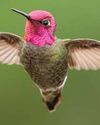
The World's Best-Known Hummingbird?
Intensively studied, the gem-like Anna’s hummingbird is a welcome visitor to the gardens of America’s most populous state: California. Bill Naylor investigates its life history
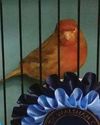
The charm of the English Cinnamon
Despite its long and complicated history, the true Cinnamon canary is still with us – in the hands of a tiny group of breeders. DONALD SKINNER-REID reckons it deserves wider appreciation
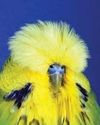
Spangles: a personal overview
FRED WRIGHT relates a budgie story of over-exploitation, consequent problems and abundant potential for the future

New converts to old breeds
Old and rare canaries have a reputation for adding fresh interest and challenge to the hobby. PETE HOOK and NICK JOY agree, and explain the birds’ charm to Dave Brown

Themed aviaries are a hit with the public at annual Stafford show
DECORATIVE AVIARY DISPLAYS from a CBS and an online bird keeping advice group were voted in the top three by visitors for the inaugural Stafford Aviary Competition.
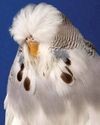
Pieds with potential
More than just a lesser variety, the dominant pied will introduce challenge and change into most studs, reckons CLIVE WAKEMAN. Here he discusses pairings to try and others to avoid

Club News
Welcome to the club and show pages – the bit that’s all about you Results: convention, specialist & rare and Breeder of the Year

Canaries Month by Month:
With Christmas around the corner, BRIAN KEENAN is well into his winter programme, and reckons he might deserve a nice outcross
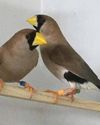
Smart Choice, Docile Nature
Dave Brown welcomes the masked grassfinch to his birdroom and shares advice on this lovely Australian species
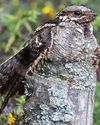
The truth about the ‘flying toad'
Odd local names and weird superstitions can’t hide the beauty and elegance of the nightjar, a species that has made a fascinating subject in a few zoo collections, reveals BILL NAYLOR